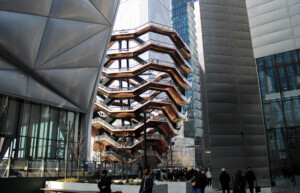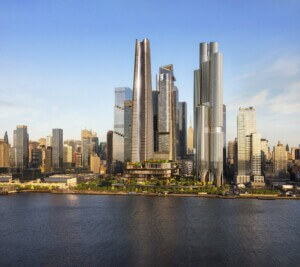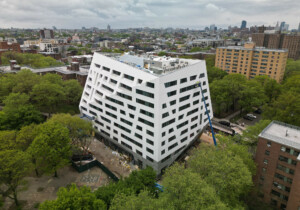Since graduating from the Yale School of Architecture in 2013, New York–based architect Aaron Schiller, founder and principal of Schiller Projects, has completed a series of offices that are pushing the limits of what workplace design can be. Rather than create simple open plans or collaborative spaces with no direction, Schiller and his team analyze how businesses operate in order to deliver data-driven solutions that help employees work better. AN Interior’s executive editor Matt Shaw sat down with Schiller at his Hudson Yards studio to discuss.
AN Interior: In your practice, workplace design is really more of a research process. What is the thinking behind that?
Aaron Schiller: When we take on a new project, first we work with the company and all stakeholders to understand the core functionality underneath how they’re using their current space. The design solution is really that study; it’s analytical design. And out of this analytical design, we get to a new program. In a way, what we do is essentially community organizing within a workplace culture.
AN: How do you think that is different from a typical client briefing on an office design?
AS: It is about the level of investigation we get to. It takes real engagement on the side of ownership or leadership to commit to this path because it requires more time upfront, but it results in an analytics-driven playbook that looks somewhere between IDEO and OMA. Our workplace strategy and cultural engagement booklets have lots of infographics and charts.
We don’t go into these workshops with just architects. We also bring in MBAs, data visualizers, people with experience in community organizing, or people with sociology backgrounds. We move in with the clients, we observe how they work in the space, and we get real data metrics behind it. They’re all distilled to attack the core issues of scale, duration, and frequency.
In the law office we designed at Hudson Yards, they came to us and they said, “Look, we’re really collaborative, but we have a traditional space and we don’t like it.” We said, “OK, let us study you.” And we came back to them, and we said, “OK, you’re not going to be a trading floor, and you’re not going to be a traditional law firm anymore, either. Here is something in between that fits your model better.” Part of that was understanding that the majority of their collaboration—their meetings, so to speak—were only two or three people. So now we have a scale. They lasted 15 to 25 minutes, so now we have a duration. And the frequency is that these are 90 percent of all meetings in total.
So now we know there’s a lot of what we call impromptus, and they happen all the time. So, we don’t create traditional dead spaces, which is what offices can largely be for a lot of companies. We’re not creating space for happenstance. We’re creating very clear multipurpose space. The great businesses are not getting rid of offices to be cheap toward their employees. They’re getting rid of offices to offer their employees what they think will be a richer working environment.
Read the full interview on our interiors and design website, aninteriormag.com.











